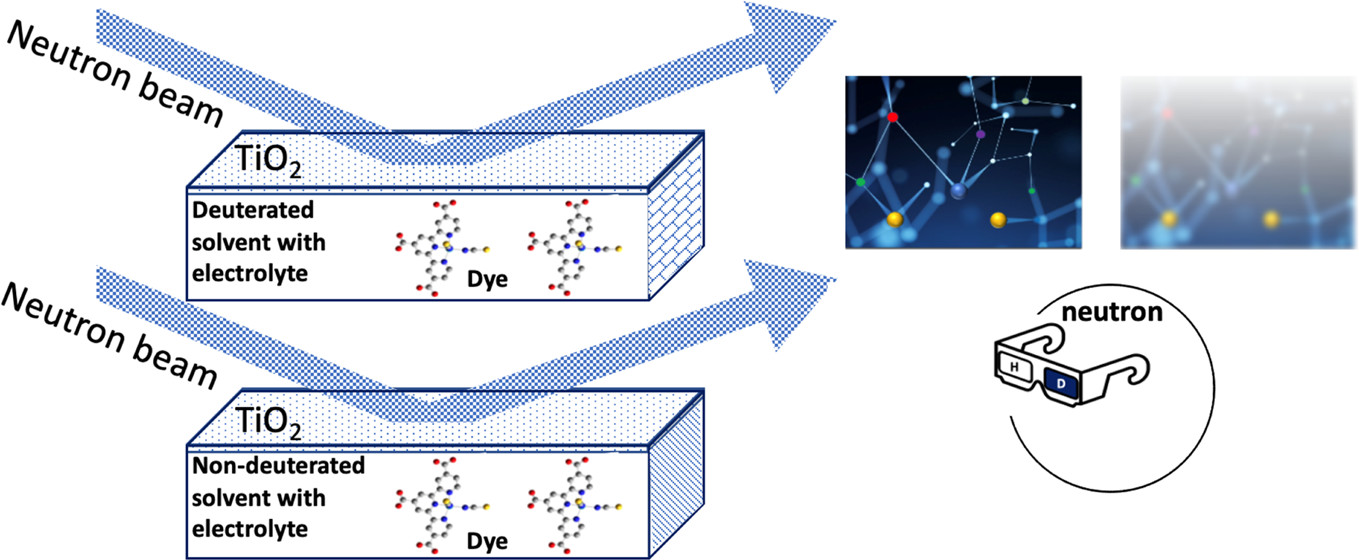Dye-sensitised solar cells (DSCs) are a special type of photovoltaics that are transparent and flexible. This gives them huge potential for applications such as solar powered windows or wearables. To understand how their performance can be improved, the structure of the interfaces between the component layers inside a DSC needs to be investigated.
Each DSC is made up of three interfacial layers: an electrolyte, a dye and a top layer of titanium dioxide. In this study, published in Langmuir, a group of researchers used neutron reflectometry on the Inter beamline at ISIS, alongside other experiments in the Materials Characterisation Lab, to study the interfaces between these layers inside a working DSC, as shown in the graphic below (DOI: 10.1021/acs.langmuir.0c03508).

The researcher group included six ISIS staff and two PhD students who were partly based at the Rutherford Appleton Laboratory. They made the most of some unique properties of neutrons to carry out their investigation. Firstly, neutrons do not have a charge, and so can penetrate into the middle of a sample. This allowed the scientists to investigate how the layers interact in situ; without having to take the solar cell apart.
Secondly, they were able to exploit the fact that neutrons interact differently with distinct isotopes of the same element. By changing the isotope of hydrogen present in the solvent of one of the layers to deuterium, and comparing the two experiments, the group were able to build a contrast picture of the system.
They used these contrast pictures to highlight different layers or the DSC, enabling them to see the different structural features present. Their experiments gave a unique insight into the how the different layers interact with one another.
In addition to the expected monolayer of dye molecules formed on the titanium dioxide (TiO2) layer, the researchers observed, for the first time, that the electrolyte was disturbing this monolayer. This was, in turn, affecting the interactions between the dye and the TiO2.
The fact that the electrolyte changes the interactions at the dye/TiO2 interface could influence the operation of a DSC, and it is therefore crucial to consider when determining how they could be made in the future.
“This study was a multi-continental experimental endeavour, spanning scientific effort from the USA, China and Europe," explains author Professor Jacqui Cole; “It required data from two neutron institutes (ISIS and the China Spallation Neutron Source) with key laboratory support from the Center for Nanoscale Materials, Argonne National Laboratory, the ISIS Materials Characterisation Laboratory and the Research Complex at Harwell."
Further information
The full paper can be found at DOI: 10.1021/acs.langmuir.0c03508
